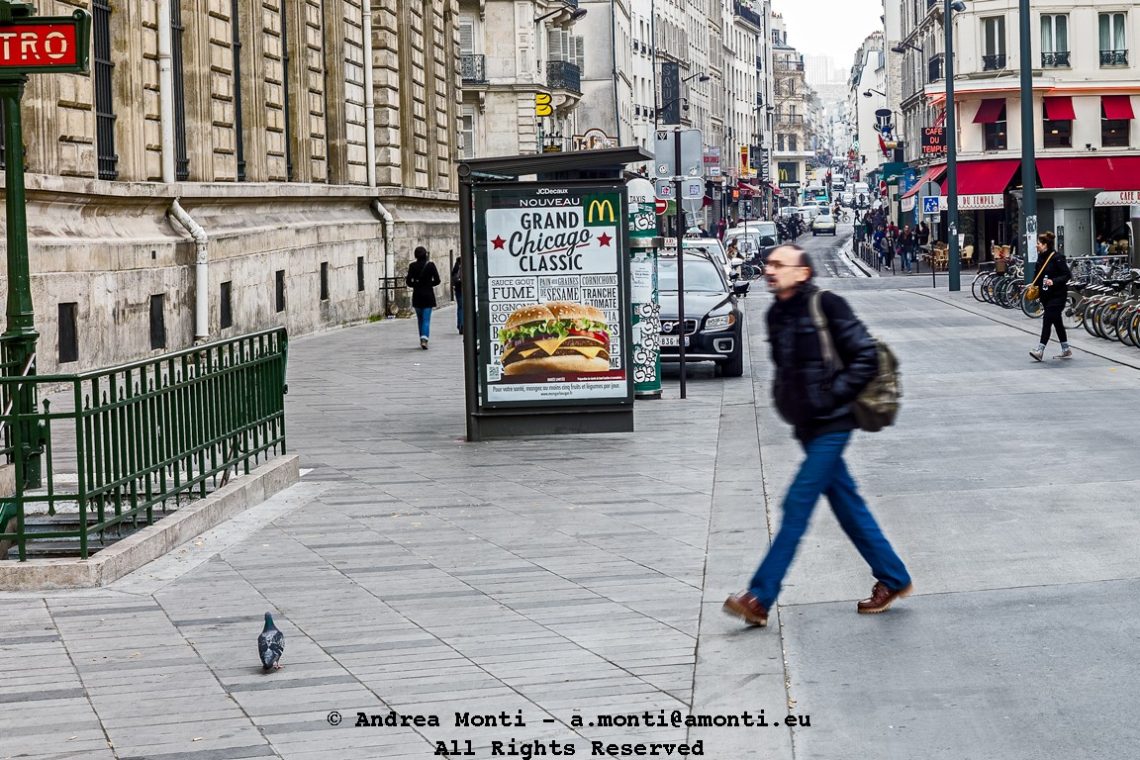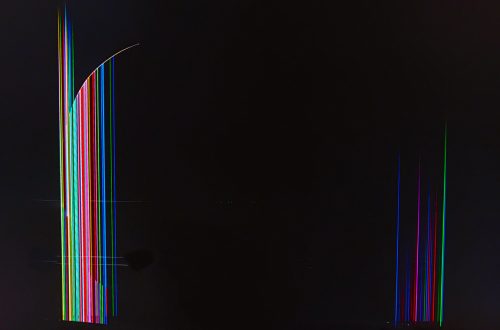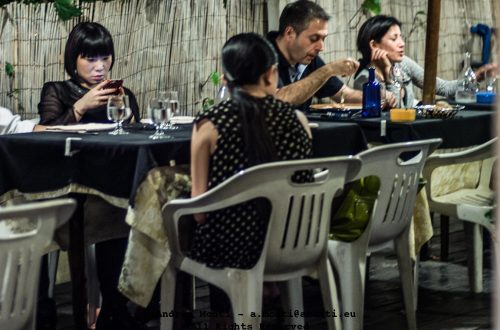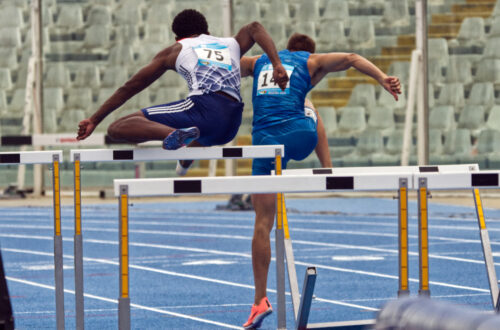
Catching the Tube in Paris
Street photography often thrives on the interplay between the static and the fleeting, and this frame from Paris captures that balance with precision. The scene is anchored by the familiar visual cues of the city — the “METRO” sign, the Haussmannian stonework, the ordered chaos of bicycles, cafés, and traffic further down the street. These elements provide a stable architectural stage against which the human drama plays out.
The blurred stride of the man crossing the frame injects the shot with movement and urgency, the sort of kinetic energy that turns a documentary image into a narrative one. His presence, slightly soft due to motion blur, contrasts sharply with the crisp rendering of the background, and this juxtaposition draws the viewer into the suggestion of a story — perhaps a dash to catch a train, or simply the natural rhythm of Parisian life.
Compositionally, the image benefits from a strong use of leading lines. The pavement seams and kerb edges guide the eye from the foreground pigeon toward the central advertisement and then down the street, effectively layering points of interest. The pigeon, almost comically oblivious to the rush around it, provides a small but significant counterpoint to the man’s hurried pace.
Exposure is handled cleanly, with enough detail retained in the highlights to hold texture in the bright stone façades, and the shadows in doorways and under the awnings kept from collapsing into black. The muted winter daylight softens the overall tonal palette, which suits the urban subject matter without tipping into flatness.
It is the layering of time within the still image that makes this frame work — the eternal cityscape, the momentary pigeon, and the fleeting blur of a man in motion — each element operating on its own rhythm, yet sharing the same rectangle of space. This is Paris as it truly is: a place where permanence and transience constantly overlap.




